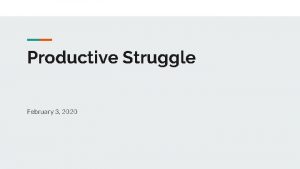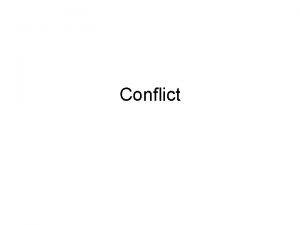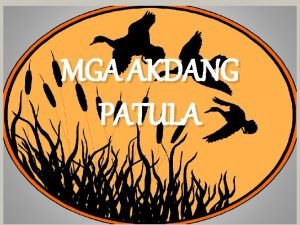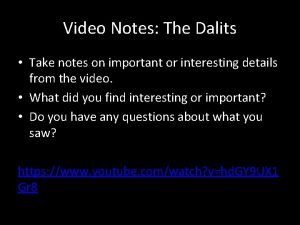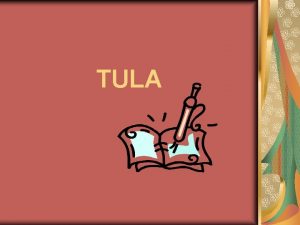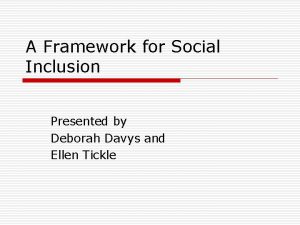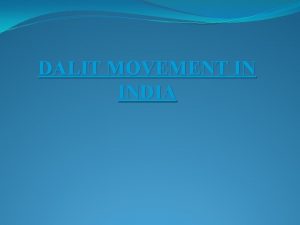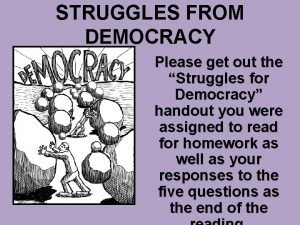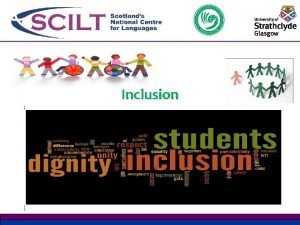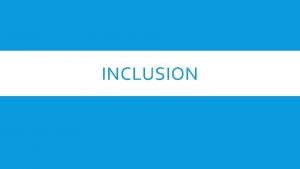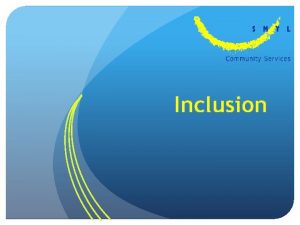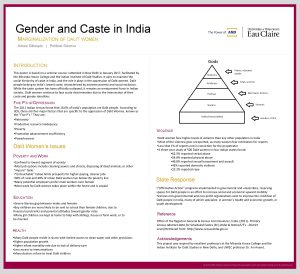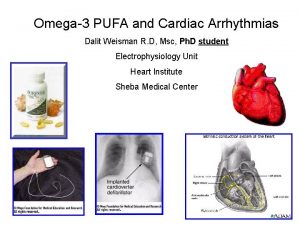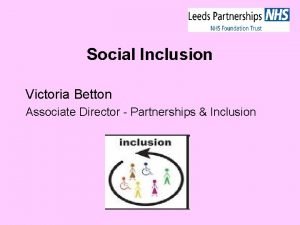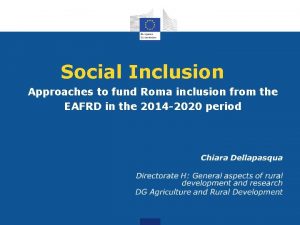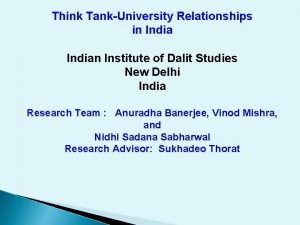Dalit Struggles Economic and Social Inclusion Dr Mrs















- Slides: 15

Dalit Struggles : Economic and Social Inclusion Dr. Mrs. S. Kalyani Madras Christian College

‘Injustice anywhere is a threat to justice everywhere’ -Martin Luther King Jr

Contents • • • Introduction Evolution of Human Being & Caste by Birth Origin: Theories of Caste System in India Caste system- negative effects on society Social struggles and discrimination Socio-Economic Indicator (2001 to 2011) Laws against discrimination What needs to be done? Conclusion

Introduction Dalits-Who are they? • There are 260 million Dalit people around the world, 160 of whom live in India. • In India, they are known as Dalits, the ex-untouchables. They form 16% of the total Indian population. • They continue to suffer from discrimination which is an obstacle to the fulfillment of their basic human rights (civil, political, economic, social and cultural rights) • Dalit means 'broken' or 'ground down'. They are commonly known as “children of lesser Gods”.

Evolution of Human Being & Caste by Birth ? ? ?

Origin: Theories of Caste System in India Ø Traditional theory Ø Political theory Ø Religious theory Ø Occupational theory Ø Evolutionary theory Ø Theory of Many

Caste system- negative effects on society • Hinders the choice of occupation as per one’s preferences. • Lower classes are looked down by the higher classes. • Stands against the norms of democracy. • Hindrance- national development and advancement. • Responsible for few religious conversations.

Social struggles and discrimination S. No Social struggles and discrimination Statistics 1. Dalit children sit separately from other children in school 1 out of 3 2. Prevented from entering police stations 27. 6% 3. Public health workers refuse to enter Dalit homes 1 out of 3 4. villages are denied access to water sources 50 out of 100 5. Dalit and non-Dalit people cannot eat together. 70%

Social struggles and discrimination. Women S. No Social struggles and discrimination Statistics 1. Illiteracy 70% 2. Forced into prostitution before reaching puberty indefinite 3. Unemployment 50% 4. Lack of decision making status at home More than 75%

Socio-Economic Indicator (2001 to 2011) S. No Indicator Status of SC/ST Status of other castes 1. Fixed capital assets Urban SC: 27% Rural SC: 28% Urban: 35. 5% Rural: 56% 2. Agricultural labour SC: 49% ST: 33% 20% 3. Child labour (out of 60 million in India) SC: 40% Not available 4. Per capita income( Weekly) SC: 174. 50 197. 05 5. Below Poverty line(2018) Urban SC: 33% Rural SC: 44% Urban: 12% Rural: 21% 6. Unemployment(2018) 5% 3. 5%

Socio- economic Indicators(20012011)cont… S. No Indicator Status of SC/ST Status of other castes 7. Education- literacy rate Males SC: 75% ST: 69% Females SC: 57% ST: 50% Males : 84% Females: 68% 8. Health- Infant mortality rate(2016) SC: 45 ST: 44 National average: 40. 7 9. Sanitation SC: 28% ST: 22% National average: 48%

Laws against discrimination Article 15 Prohibition of employment as manual scavengers and their rehabilitation act 81 st amendment 77 th amendment Protection of civil rights act SC/ST prevention of atrocities act-1989

What needs to be done? This convention sets out the following charter of demands to ensure a better life for the crores of dalits in our country : Land reforms Reservations Special component plan Infrastructure development Rooting out of untouchability Protection from atrocities Employment

What needs to be done? Cont…. Education Agricultural workers Rural employment guarantee scheme Public distribution system Credit Bonded labour and child labour Scavengers Intercaste marriages

THANK YOU
 They are mrs garcia and mrs castro
They are mrs garcia and mrs castro They are mrs garcia and mrs castro
They are mrs garcia and mrs castro Productive struggle definition
Productive struggle definition Hoover struggles with depression
Hoover struggles with depression Benefits of productive struggle
Benefits of productive struggle What is the struggle between opposing forces
What is the struggle between opposing forces Mrs. darling was ___________ of mrs. s.
Mrs. darling was ___________ of mrs. s. Ano ang layunin sa pagsulat ng tulang awit
Ano ang layunin sa pagsulat ng tulang awit Isang tula na isinulat nang walang sinusunod na patakaran.
Isang tula na isinulat nang walang sinusunod na patakaran. What were some of the borrowings of the hittites
What were some of the borrowings of the hittites Matalinhagang tula
Matalinhagang tula Hotels in marinduque philippines
Hotels in marinduque philippines Gmef meaning
Gmef meaning Fondo de inclusión social energético
Fondo de inclusión social energético Social inclusion framework
Social inclusion framework Conclusion of growth and development
Conclusion of growth and development


